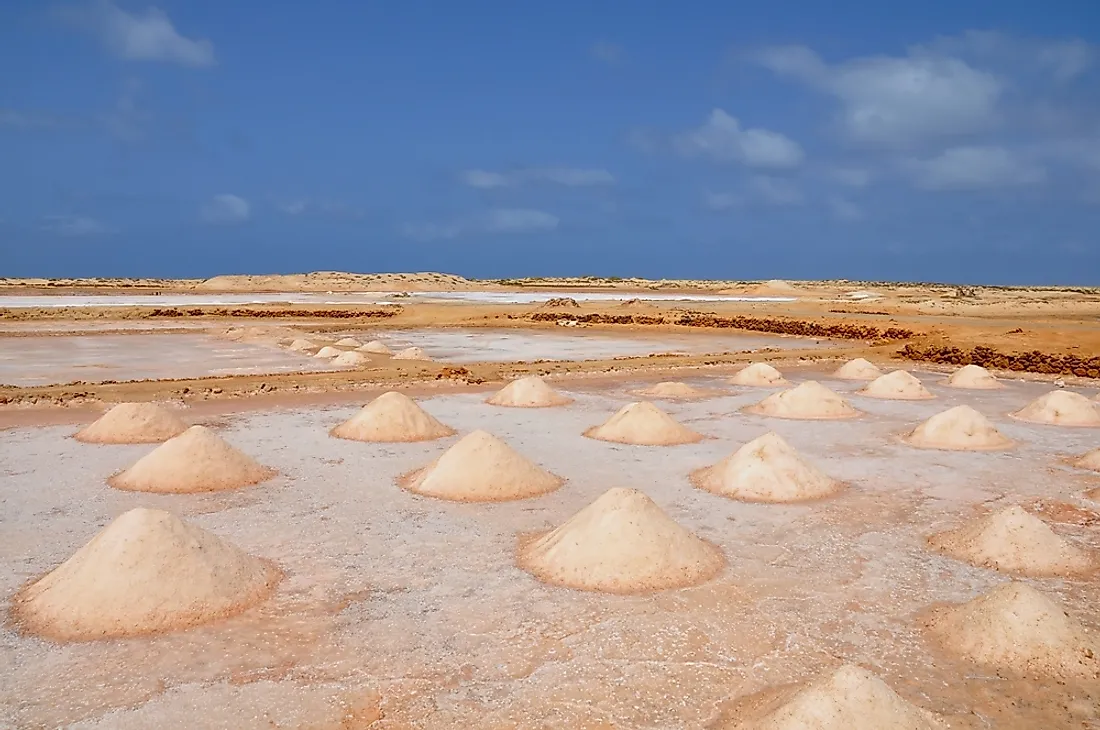What Are The Biggest Industries In Cabo Verde?

Cabo Verde, also known as Cape Verde, is a country in West Africa. Cabo Verde is comprised of ten islands, nine of which are inhabited while one is uninhabited as well as other several islets. The archipelago is split into two groups namely the Sotavento group of islands and the Barlavento group of islands.
The nation’s biggest harbor is situated at Mindelo on Sao Vicente Island. The harbor accommodates a variety of vessels and has served as an important fueling point. The nation's climate has relatively stable temperatures and extreme aridity. When the nation gained independence, the central role in the economy was taken up by the government through the establishment of several state-owned enterprises. The government's strategy was however not as successful and in many ways limited the growth of the economy. The country underwent considerable economic changes in the mid-1990s transitioning towards a market economy. The changes resulted in the decline of state-owned enterprises. In the early 2000s, the government privatized various companies including banks, utility companies, and tourism-sector entities. The nation's economy is dependent on the Service industry with tourism, transportation, and commerce accounting for 76% of the GDP in 2014. Light industries accounted for 16% of the GDP in the same year. According to the World Bank, the country had a nominal GDP of $1.87 billion in 2014.
Tourism
The tourism sector is one of the most important in the economy. The nation welcomes an estimated half a million visitors every year. The tourists flock to the nation to experience the endless African Sunshine and the unspoiled white sandy beaches. The tourism and travel industry directly accounted for 17.8% of the nations GDP in 2017. The main entities in the industry are hotels, restaurants, and travel agents. The sector is expected to witness an annual growth rate of about 5.4 % by 2028.
Manufacturing
The manufacturing industry in the country is comprised mainly of small scale industries which include sewing, ceramics, textiles, pharmaceuticals, and beverages. Fish canning coupled with the processing of frozen lobsters is also carried out in Cabo Verde.
Agriculture, Fishing, and Forestry
The agricultural sector in the country is limited by the recurrent and severe droughts that occur on the islands. Some of the crops cultivated for domestic consumption include castor beans, maize, potatoes, sugar cane, and peanuts. The harsh climatic conditions pose significant challenges for those looking to invest in the sector. Irregular crop production and short periods of famine are common due to the harsh conditions. The conditions were made worse by poor grazing practices by goats and sheep as well as little to no effort in water conservation and reforestation during the colonial time. The government has since initiated tree planting exercises of the more drought resistant acacia trees as well as the construction of dikes and dams to conserve water. The government also encourages the use of terracing to increase the retention of water in the subsoil and increase the areas available for farming. The nation's fishing sector is still not fully exploited. The main species caught are lobster and tuna. The forestry sector is affected by firewood harvesting which puts substantial strain on the nation’s woodland resources. The use of the firewood has been on the rise in recent years, but the government’s reforestation project attempts to mitigate the adverse effects of firewood harvesting.
Finance and Banking
Escudo is the nation's currency and is issued by the Banco de Cabo Verde (central bank). There are several foreign banks in the nation as well as a stock exchange. The government privatized several insurance and banking institutions in the late 1990s.
Telecommunications and Transportation
Most of the roads in the country are paved, and all the inhabited islands have airports. International flights to several destinations such as Brazil, Boston, Rome, Lisbon, Paris, and various destinations in West Africa are possible. The island nation also has ferry services. The country also has a national airline and shipping line. Cabo Verde has good telephone service, and the use of Cellular telephone is also expanding.
Mining, Construction, and Energy
Cabo Verde has limited natural resources. The nation’s mineral requirements are met through imports. However, there is domestic production of gypsum, clay, pozzolana, and limestone. Salt is also mined on the islands of Sal, Maio, and Boa Vista. The commercial extraction of salt at Salina's de Pedra de Lume located on Sal ceased in 1985. Companies such as Cimpor Cabo Verde S.A produce concrete and aggregate and distribute imported cement. A construction boom fueled by the tourism sector and public works led to a 60% increase in the sale of concrete and aggregate in 2014 compared to the previous year. The nation’s oil industry is dependent on refined petroleum products imported from mainland Africa and Portugal. The government aims at reducing the reliance on imported fossil fuels by investing in renewable sources of energy. The government has so far constructed wind farms on several islands with a capacity of 28 megawatts as well as solar energy farm on the island of Sao Tiago which has a production capacity of 5 megawatts and another on Sal with a capacity of 2.5 megawatts.
Challenges Facing the Economy of Cabo Verde
The nation's economy is vulnerable to external shocks and it also depends on development aid as well as foreign remittances. The government is currently working on the Strategic Plan for Sustainable Development in the 2017 to 2021 period to increase diversification to sectors such as expanding tourism, light industry, agriculture, and infrastructure. The emerging trade tensions between the United States, Europe, and China which is vital trading partners could hurt the economy and exports. The nation remains highly vulnerable to climate change.











